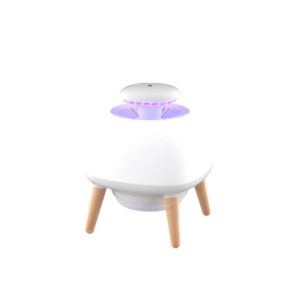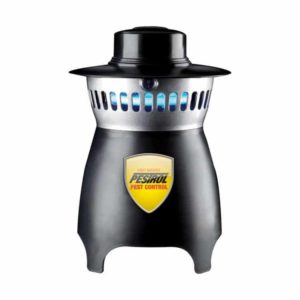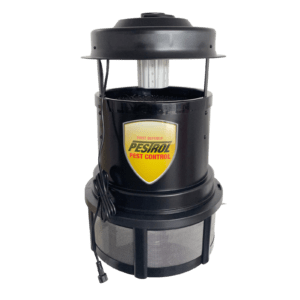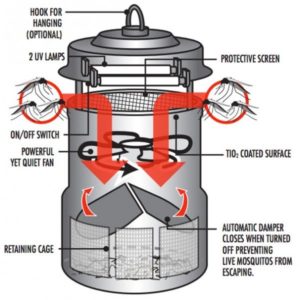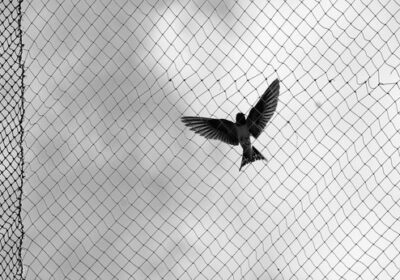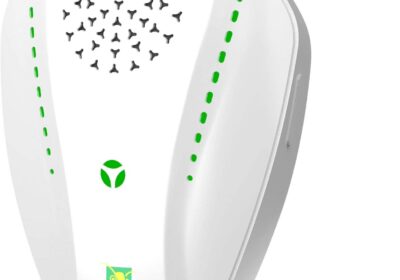Combating Mosquitoes in New Zealand: Problems, Prevention, and Solutions
Brief overview of mosquitoes as a pest in New Zealand
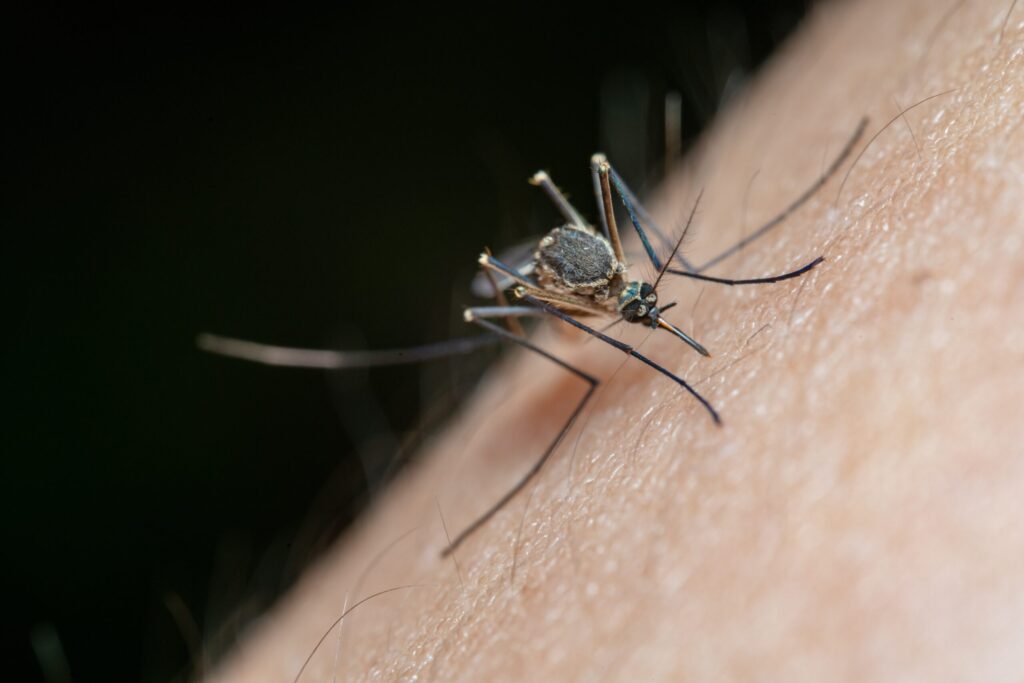
Mosquitoes are considered to be a pest in New Zealand due to their potential to transmit diseases such as dengue fever, Zika virus, and Ross River virus. While New Zealand is fortunate to be free of many mosquito-borne diseases that are common in other parts of the world, the introduction of a disease-carrying mosquito species could have devastating consequences for the country’s public health.
There are 16 species of mosquitoes that are known to exist in New Zealand, and most of them are not considered to be a significant threat to public health. However, the southern saltmarsh mosquito (Aedes camptorhynchus) and the Asian tiger mosquito (Aedes albopictus) are two species that are of particular concern.
The southern saltmarsh mosquito is found in coastal areas throughout New Zealand and can transmit the Ross River virus, which causes joint pain, fever, and fatigue. The Asian tiger mosquito is not currently present in New Zealand, but it is considered to be one of the most invasive mosquito species in the world and has the potential to transmit a range of diseases, including dengue fever and Zika virus.
Mosquito control in New Zealand is primarily managed by local authorities, and measures include the use of insecticides, mosquito traps, and the removal of standing water, which is where mosquitoes lay their eggs. The Ministry for Primary Industries (MPI) is responsible for monitoring and responding to any new threats posed by exotic mosquito species.
New Zealand’s isolation and strict biosecurity measures have helped to prevent the introduction of many harmful pests and diseases, including mosquitoes. However, the country’s vulnerability to climate change and increasing global travel means that ongoing vigilance is required to ensure that the threat posed by mosquitoes remains minimal.
Explanation of why mosquitoes are a problem in NZ
Mosquitoes are considered a problem in New Zealand due to their potential to transmit diseases, particularly if an exotic species were to be introduced into the country. While New Zealand is fortunate to be free of many mosquito-borne diseases that are common in other parts of the world, the introduction of a disease-carrying mosquito could have devastating consequences for the country’s public health.
Mosquitoes are known to transmit a range of diseases, including dengue fever, Zika virus, and Ross River virus, which can cause joint pain, fever, and fatigue. While these diseases are not currently present in New Zealand, they could potentially be introduced if an infected mosquito were to enter the country. Mosquitoes are particularly problematic because they can quickly spread diseases from person to person, and can breed and multiply rapidly in areas with standing water.
In addition to the potential health risks posed by mosquitoes, they are also a nuisance due to their biting behavior. Mosquitoes feed on the blood of humans and animals, and their bites can be itchy and uncomfortable. This can cause significant discomfort, particularly for those who are allergic to mosquito bites or who have sensitive skin.
Finally, mosquitoes can also have a negative impact on tourism and outdoor activities, particularly in areas with high mosquito populations. Visitors to New Zealand may be deterred from visiting areas with high mosquito populations, and locals may avoid outdoor activities during peak mosquito season to avoid being bitten.
Overall, mosquitoes are considered a problem in New Zealand due to their potential to transmit disease, their biting behavior, and their impact on tourism and outdoor activities. While New Zealand is currently free of many mosquito-borne diseases, ongoing vigilance and control measures are required to ensure that the country remains free of these pests and the diseases they can transmit.
Problems caused by mosquitoes in NZ
Mosquito-borne diseases in New Zealand
New Zealand is fortunate to be free of many mosquito-borne diseases that are common in other parts of the world. However, there are still a few mosquito-borne diseases that pose a potential risk to public health.
Ross River Virus (RRV) is one of the most significant mosquito-borne diseases in New Zealand. It is transmitted by the southern saltmarsh mosquito (Aedes camptorhynchus), which is found in coastal areas throughout the country. RRV causes joint pain, fever, and fatigue, and while it is not usually fatal, it can cause significant discomfort and can take several months to recover from.
While the Asian tiger mosquito (Aedes albopictus) is not currently present in New Zealand, it is considered to be one of the most invasive mosquito species in the world and has the potential to transmit a range of diseases, including dengue fever and Zika virus. Both of these diseases can cause flu-like symptoms, and in some cases, severe complications.
Other mosquito-borne diseases that have been reported in New Zealand include Tahyna virus, which is transmitted by the mosquito Aedes aegypti, and Sindbis virus, which is transmitted by the mosquito Culex sitiens. However, these diseases are rare and not considered to be a significant public health risk.
The Ministry for Primary Industries (MPI) is responsible for monitoring and responding to any new threats posed by exotic mosquito species that may introduce new diseases to New Zealand. In addition, local authorities are responsible for implementing mosquito control measures, including the use of insecticides, mosquito traps, and the removal of standing water.
Mosquitoes as a nuisance to people and pets
Mosquitoes can be a significant nuisance to people and pets due to their biting behavior. Mosquitoes feed on the blood of humans and animals, and their bites can be itchy and uncomfortable. This can cause significant discomfort, particularly for those who are allergic to mosquito bites or who have sensitive skin.
Mosquito bites can cause a range of reactions, from small, itchy bumps to more severe swelling and redness. In some cases, mosquito bites can also lead to more serious complications, such as allergic reactions or the transmission of disease.
Pets, particularly dogs, can also be affected by mosquito bites. Mosquitoes can transmit heartworm to dogs, a potentially fatal disease that affects the heart and lungs. In addition, mosquito bites can cause irritation and discomfort for pets, leading to scratching and further skin irritation.
Mosquitoes can also have a negative impact on outdoor activities, particularly during peak mosquito season. People may avoid outdoor activities, such as camping or hiking, to avoid being bitten by mosquitoes. This can have a significant impact on tourism and outdoor recreation industries.
In addition, mosquito control measures, such as the use of insecticides and mosquito traps, can also be a nuisance. Insecticides may have an unpleasant odor and can be harmful to other insects, including beneficial insects such as bees and butterflies. Mosquito traps can also be noisy and may attract other insects to the area.
Impact on the tourism industry
Mosquitoes can have a significant impact on the tourism industry, particularly in areas with high mosquito populations. Visitors to New Zealand may be deterred from visiting areas with high mosquito populations, and locals may avoid outdoor activities during peak mosquito season to avoid being bitten.
Mosquitoes can make outdoor activities, such as hiking, camping, and exploring nature, less enjoyable and may lead to reduced tourism in affected areas. This can have a significant impact on local businesses, such as tour operators, accommodation providers, and restaurants, that rely on tourism for their livelihood.
In addition, the presence of mosquito-borne diseases, even if they are not currently present in New Zealand, can also deter visitors from traveling to affected areas. This can have a significant impact on the tourism industry, particularly if there is a perception that a particular area is high-risk for mosquito-borne diseases.
To mitigate the impact of mosquitoes on the tourism industry, mosquito control measures can be implemented. These measures may include the use of insecticides, mosquito traps, and the removal of standing water where mosquitoes breed. In addition, educational campaigns can be launched to inform visitors about the risks posed by mosquitoes and how to protect themselves from mosquito bites.
Home remedies to prevent mosquitoes
Eliminating standing water
Eliminating standing water is a crucial step in controlling mosquito populations. Mosquitoes lay their eggs in standing water, and the larvae develop in the water before emerging as adult mosquitoes. By eliminating standing water, mosquito breeding sites are removed, and the number of adult mosquitoes is reduced.
Standing water can accumulate in a range of locations, including gutters, flower pots, buckets, and bird baths. Even small amounts of standing water can provide a breeding ground for mosquitoes. Regularly checking and emptying containers that hold water can help to prevent mosquito breeding and reduce the overall mosquito population.
In addition to eliminating standing water in and around the home, it is also essential to ensure that public spaces, such as parks and waterways, are free of standing water. This may require ongoing maintenance, such as clearing blocked drains or filling in potholes, to ensure that water does not accumulate in these areas.
Eliminating standing water is particularly important in areas where mosquitoes are known to transmit diseases. For example, the southern saltmarsh mosquito, which is found in coastal areas throughout New Zealand, is a vector for the Ross River virus. By eliminating standing water in these areas, the risk of mosquito-borne disease transmission can be reduced.
In addition to eliminating standing water, other mosquito control measures, such as the use of insecticides and mosquito traps, can also be implemented to further reduce mosquito populations. However, eliminating standing water is a simple and effective way to control mosquitoes, and it is a critical step in any mosquito control program.
Installing screens on doors and windows
Installing screens on doors and windows is an effective way to prevent mosquitoes from entering homes and buildings. Mosquitoes are attracted to the carbon dioxide and heat that people and animals emit, and can easily enter through open doors and windows.
Screens can be made from a range of materials, including fiberglass, aluminum, and stainless steel, and can be designed to fit a range of window and door sizes. The mesh size of the screen should be small enough to prevent mosquitoes from passing through, while still allowing air to flow through and maintaining visibility.
In addition to preventing mosquitoes from entering homes and buildings, screens can also provide a range of other benefits. They can help to keep out other insects, such as flies and wasps, and can also provide a barrier against dust and debris.
Screens can be particularly effective in areas where mosquito-borne diseases are present, as they provide an additional layer of protection against mosquito bites. In combination with other mosquito control measures, such as the use of insecticides and mosquito traps, screens can help to reduce the overall mosquito population and the risk of mosquito-borne disease transmission.
Overall, installing screens on doors and windows is an effective way to prevent mosquitoes from entering homes and buildings. By preventing mosquito bites, screens can help to reduce the risk of mosquito-borne diseases and improve the overall quality of life for people and animals living in affected areas.
Using mosquito repellent sprays and creams
Using mosquito repellent sprays and creams is a common and effective way to prevent mosquito bites. Mosquito repellents work by masking the human scent and making it more difficult for mosquitoes to locate and bite people.
Mosquito repellent sprays and creams contain active ingredients, such as DEET, picaridin, or IR3535, which have been shown to be effective in repelling mosquitoes. These ingredients are applied to exposed skin, and can provide protection for several hours, depending on the concentration of the repellent and the activity level of the person wearing it.
When using mosquito repellent sprays and creams, it is important to follow the instructions on the label and to apply the repellent evenly over exposed skin. Repellents should not be applied to broken or irritated skin, and should be washed off once they are no longer needed.
Mosquito repellent sprays and creams can be particularly useful in areas where mosquito-borne diseases are present, as they provide an additional layer of protection against mosquito bites. However, it is important to note that while mosquito repellents can reduce the risk of mosquito bites, they do not provide 100% protection. Other mosquito control measures, such as the use of screens on doors and windows, eliminating standing water, and wearing protective clothing, should also be used to further reduce the risk of mosquito bites.
Mosquito traps as a solution
How mosquito traps work
Mosquito traps are devices that attract and capture mosquitoes. They work by mimicking the human scent and producing carbon dioxide, which is a byproduct of human respiration and is attractive to mosquitoes.
Mosquito traps typically use one of two methods to attract and capture mosquitoes: suction or adhesive. Suction traps use a fan to draw mosquitoes into a collection container, while adhesive traps use a sticky surface to trap mosquitoes when they land on the trap.
Mosquito traps can also use a range of additional attractants, such as heat, light, and scent, to further increase their effectiveness. For example, some traps use UV light to attract mosquitoes, while others use octenol, a scent that is attractive to many mosquito species.
Once mosquitoes are captured, they are typically killed through dehydration or electrocution, depending on the type of trap. The collection container or adhesive surface can then be emptied or replaced, and the trap can continue to capture additional mosquitoes.
Mosquito traps can be effective in reducing mosquito populations, particularly in outdoor areas such as gardens, patios, and other outdoor living spaces. They can also be useful in areas where other mosquito control measures, such as the use of insecticides, may not be practical or desirable.
However, it is important to note that mosquito traps are not a complete solution to mosquito control. They should be used in combination with other mosquito control measures, such as eliminating standing water and using mosquito repellent, to further reduce the mosquito population and the risk of mosquito-borne diseases.
Different types of mosquito traps available
There are several types of mosquito traps available, each with its own unique design and method of attracting and capturing mosquitoes. Some of the most common types of mosquito traps include:
- CO2 Traps: CO2 mosquito traps work by producing carbon dioxide, which mimics human breath and attracts mosquitoes. These traps typically use a propane tank to generate CO2 and a fan to draw mosquitoes into a collection container. Some CO2 traps also use additional attractants, such as heat and scent, to increase their effectiveness.
- UV Light Traps: UV light mosquito traps use ultraviolet light to attract mosquitoes, which are then captured using a fan or adhesive surface. These traps are often used in conjunction with other attractants, such as octenol or lactic acid, to further increase their effectiveness.
- Adhesive Traps: Adhesive mosquito traps use a sticky surface to capture mosquitoes when they land on the trap. These traps are typically designed for indoor use and can be placed in areas where mosquitoes are likely to enter, such as near doors and windows.
- Heat Traps: Heat mosquito traps use a heating element to attract mosquitoes, which are then captured using a fan or adhesive surface. These traps are designed to mimic the warmth of human skin and can be particularly effective in attracting mosquitoes that are seeking a blood meal.
- Combination Traps: Combination mosquito traps use a combination of attractants, such as CO2, heat, and scent, to attract mosquitoes. These traps typically use a fan or adhesive surface to capture mosquitoes and can be highly effective in reducing mosquito populations.
When choosing a mosquito trap, it is important to consider factors such as the size of the area to be covered, the type of mosquito species present, and the desired level of control. Some traps are designed for indoor use only, while others are suitable for outdoor use. It is also important to follow the manufacturer’s instructions when setting up and using mosquito traps, to ensure that they are used safely and effectively.
Benefits of using mosquito traps in the home
Using mosquito traps in the home can provide several benefits, including:
- Reduced Mosquito Population: Mosquito traps can help reduce the number of mosquitoes in the home, which can make it easier to enjoy outdoor spaces and reduce the risk of mosquito-borne diseases.
- Low Maintenance: Mosquito traps require minimal maintenance, making them a convenient option for homeowners. They typically only need to be emptied or cleaned periodically, and some traps use replaceable components for added convenience.
- Environmentally Friendly: Mosquito traps are an environmentally friendly alternative to chemical insecticides. They do not release harmful chemicals into the environment and can be used safely around children and pets.
- Safe: Mosquito traps are generally safe to use and do not pose a threat to humans or pets. They typically use non-toxic bait or adhesive surfaces to capture mosquitoes, which are then disposed of safely.
- Cost-Effective: While some mosquito traps can be expensive, many models are relatively affordable and can provide long-lasting mosquito control. By reducing the need for chemical insecticides and other mosquito control measures, they can also help save money over time.
- Versatile: Mosquito traps come in a variety of shapes and sizes, making them suitable for use in a range of indoor spaces. Some traps are designed for use in specific areas, such as bedrooms or living rooms, while others can cover larger spaces.
Conclusion
Summary of the problems caused by mosquitoes in New Zealand
Mosquitoes are a significant problem in New Zealand, where they can cause a range of health and economic issues. The country is home to several mosquito species, some of which can carry and transmit diseases such as Ross River virus and Dengue fever. Mosquito bites can also cause skin irritation and discomfort, and can be particularly troublesome for pets and other animals.
In addition to their impact on human and animal health, mosquitoes can also have a significant economic impact on industries such as tourism and agriculture. Mosquito-borne diseases can deter tourists from visiting certain areas, while the presence of mosquitoes can reduce crop yields and increase the need for costly pest control measures.
To address the problem of mosquitoes in New Zealand, various control measures are used, including the elimination of standing water, the use of screens on doors and windows, the application of mosquito repellents, and the use of mosquito traps. By implementing these measures, individuals and communities can help reduce the risk of mosquito-borne diseases and improve their overall quality of life.
Importance of taking measures to prevent mosquito infestations
Taking measures to prevent mosquito infestations is important for several reasons:
- Protecting Public Health: Mosquitoes are known to transmit several diseases, some of which can be fatal. By preventing mosquito infestations, we can reduce the risk of mosquito-borne illnesses and protect public health.
- Reducing Discomfort: Mosquitoes can cause skin irritation and discomfort, and their presence can make it difficult to enjoy outdoor activities. By preventing mosquito infestations, we can make our homes and communities more comfortable and enjoyable.
- Protecting the Environment: Many insecticides used to control mosquitoes can be harmful to the environment and other species. By taking preventive measures, we can reduce the need for these chemicals and protect the environment.
- Saving Money: Treating a mosquito infestation can be expensive, and the cost of medical treatment for mosquito-borne diseases can also be significant. By preventing infestations in the first place, we can save money and reduce the economic impact of mosquitoes.
- Promoting Tourism and Agriculture: Mosquitoes can have a negative impact on the tourism and agriculture industries by deterring visitors and reducing crop yields. By preventing mosquito infestations, we can support these industries and promote economic growth.
In summary, taking measures to prevent mosquito infestations is essential for protecting public health, reducing discomfort, protecting the environment, saving money, and promoting economic growth. By implementing these measures at the individual and community level, we can create a safer and more enjoyable environment for everyone.
Advantages of using mosquito traps as an effective solution.
Using mosquito traps can be an effective solution for controlling mosquitoes in homes and outdoor spaces. Some advantages of using mosquito traps as a solution include:
- Chemical-Free: Mosquito traps typically use non-toxic or low-toxicity methods to attract and capture mosquitoes, making them a safer and more environmentally friendly option than chemical insecticides.
- Targeted Approach: Mosquito traps can be designed to attract specific mosquito species, allowing homeowners to target the mosquitoes that are most prevalent in their area.
- Low Maintenance: Most mosquito traps require minimal maintenance and can be left to run continuously, making them a convenient option for busy homeowners.
- Safe for Humans and Pets: Mosquito traps are generally safe for humans and pets, as they use non-toxic bait or adhesive surfaces to capture mosquitoes.
- Long-Term Control: Unlike some other mosquito control methods, such as fogging or spraying, mosquito traps can provide long-term control of mosquito populations.
- Versatile: Mosquito traps come in a variety of shapes and sizes, making them suitable for use in a range of indoor and outdoor spaces.
- Cost-Effective: While some mosquito traps can be expensive, many models are relatively affordable and can provide long-lasting mosquito control. By reducing the need for chemical insecticides and other mosquito control measures, they can also help save money over time.
In summary, using mosquito traps can provide an effective and environmentally friendly solution for controlling mosquito populations in homes and outdoor spaces. With their targeted approach, low maintenance, and long-term control, mosquito traps can help homeowners and communities enjoy the outdoors while reducing the risk of mosquito-borne diseases.



